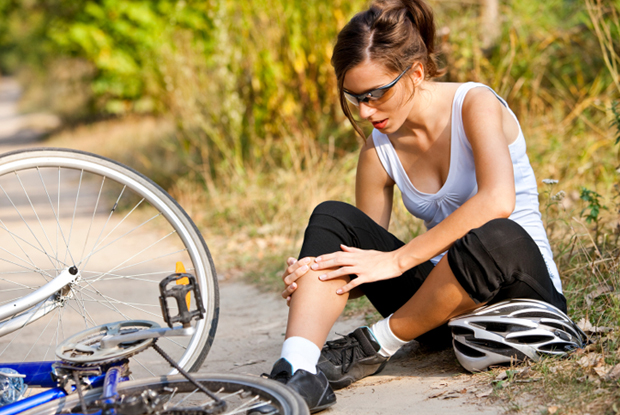Get back in the game with proven treatment plans.
Causes & Symptoms
Sports injuries can affect every part of the body. Most are fairly minor, such as bruises, sprains or strains. More serious conditions with pain and degenerative function depend on the area of the body and type of activity.
- Neck: Repetitive stress disorders, impact injuries (such as whiplash), herniated disc, muscle strain, slipped vertebrae (which can also cause pain in the arms and shoulders).
- Shoulders: inflammation or tears in the ligaments and tendons create pain and impair movement.
- Elbows: Tennis Elbow and Golfer’s Elbow do not refer to the specific sport, they are conditions caused by a tear in the tendon creating inflammation and soreness. Tennis Elbow is pain and inflammation on the outside of the elbow. Golfer’s Elbow affects the inside of the elbow.
- Wrists: very common area for sprains, strains or fractures. Sports involving hand grip (golf, racquet sports, etc.) can cause carpal tunnel syndrome, a condition that causes prickling, tingling or numbness in the hands, weaknesses, and/or loss of ability to grip or hold objects.
- Upper Back: sports that require movement of the arms, shoulder and upper back can create pain from overuse or strain. Participants of contact sports are at risk for impact injuries affecting the vertebrae, head and neck.
- Lower Back: one of the most common sports injuries as the lower back rules how the body bends and twists.
- Hips: pain can be caused by repetitive use or impact injuries.
- Knees: common problem in sports, especially with older participants as the knee’s protective cartilage wears down over time. Injury and pain can also occur when the knee is twisted suddenly and forcefully.
- Ankles: sprains caused by stretched or torn ligaments, jarring movement or a slight misstep can cause injury.
- Plantar fasciitis (Jogger’s Heel): common in running sports, Jogger’s Heel is a painful inflammation on the sole of the foot, and is exacerbated by improper footwear or inadequate arch support.
How PRI Can Help
Medications may help with temporary pain relief, but they do not treat inflammation or damage to muscles, tendons and tissues. PRI is committed to discovering the source of your pain and developing a drug-free, non-surgical treatment program to facilitate your full recovery.
Chiropractic: highly effective in reducing pain, and correcting and restoring normal alignment and motion of the back and spine.
Physical Therapy: a combination of active therapy (such as stretching exercises) and passive treatment (cold/heat therapy) will reduce pain, strengthen the muscles and restore movement and flexibility.
Acoustic Wave Therapy: pain and drug free alternative to surgery; high intensity waves break down damaged tissue and stimulate production of healthy tissue; highly effective in relieving pain, reversing inflammation and improving mobility.
Massage: helps to relieve discomfort associated with muscular and chronic pain.
Acupuncture: highly effective in relieving muscle tension and reducing chronic pain, the effects can last for months.
Disc Decompression: painless and safe therapy that relieves back, leg and neck pain and accelerates return to normal activity.
Aquatic Therapy: physical rehabilitation exercises in water; reduces pain and inflammation in back, hip and legs; improves muscle strength and flexibility.
Custom Orthotics and Orthopedic Shoes: reduce pain; increase stability, and improve full range of motion (ability to walk, run and jump).


